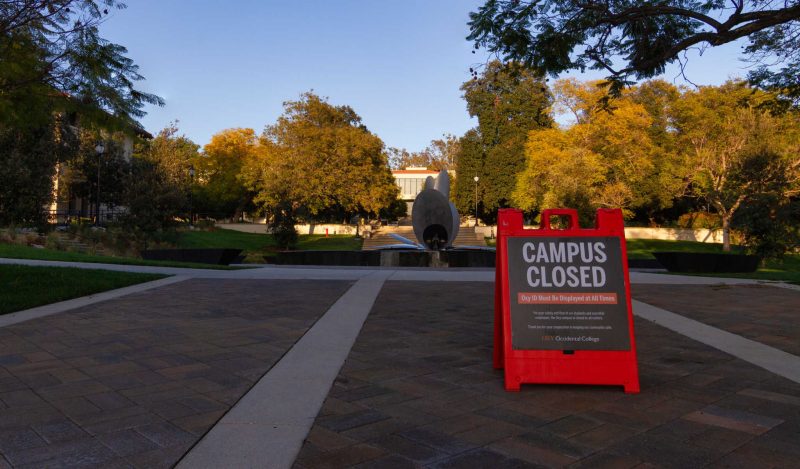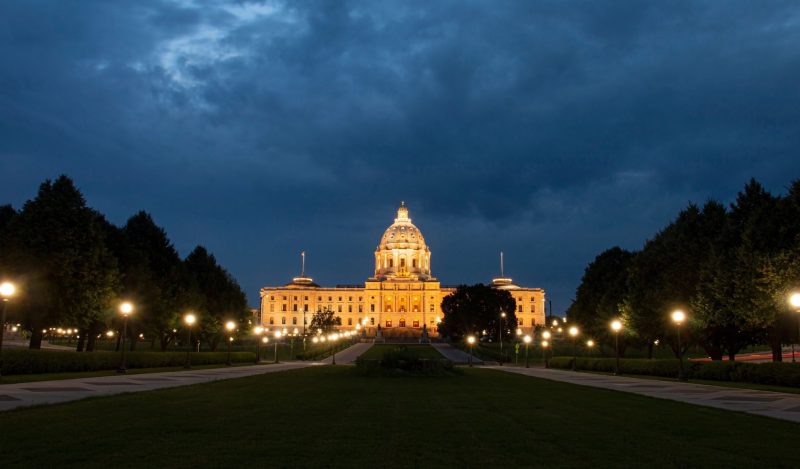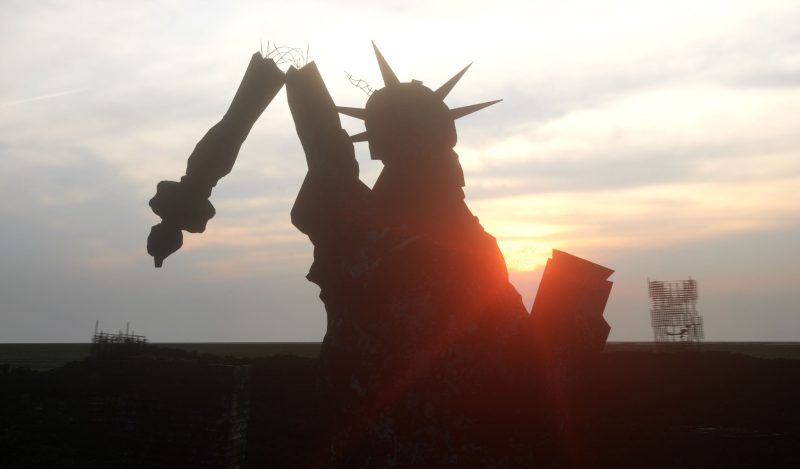On Friday afternoon, March 13, 2020, I stopped by my department chair’s office as I was leaving campus. The following week was our university’s Spring Break, and, with covid hysteria already ramping up, rumors were flying. I wanted to know if my chair thought we would be returning to campus after the break.
“I’m not sure yet,” he told me, “but from what I hear, I doubt it. Check your email on Monday.”
That Monday, of course, was March 16, The Day the World Shut Down. So no, we didn’t go back to campus following the break, or for months after. In Georgia, we did “return” to on-campus instruction in August—very gingerly, as I wrote for Brownstone in March. But other states kept their campuses more or less closed for much longer—a year or more, in some cases.
That was a huge mistake, for which many colleges and universities are now paying the price.
I confess that, in mid-March of 2020, I pretty much bought into “15 days to flatten the curve.” It sounded reasonable, and I had been conditioned along with most well-meaning Americans to assume our government and public health officials a) knew what they were doing, and b) had our best interests at heart.
By Easter, though—which my wife and I spent at home, since our church was also closed, which is another essay entirely—I was beginning to have my doubts. And by May, as I pored over the numbers coming in from Italy and Israel—yes, I did my own research—it was becoming abundantly clear to me that covid posed almost no threat to healthy young people and very little threat even to middle-aged professors.
If we wanted to keep campuses closed through the summer, just to be on the safe side, I thought that would be fine. Students could take summer classes online if they wanted. (It’s just summer school, right?) But it seemed to me there was no reason institutions across the country should not fully reopen for the Fall Semester.
In June, I published an essay to that effect on the Martin Center’s website. (That’s the James G. Martin Center for Academic Renewal, formerly known as the Pope Center for Higher Education Policy. If you’re not already familiar with it, do yourself a favor and check it out.)
My argument, in response to highly influential pieces like “The Case Against Reopening” in The Chronicle of Higher Education and “Colleges Are Deluding Themselves” in The Atlantic, consisted of four main points: 1) covid is not, in fact, particularly lethal for young people or even the middle-aged; 2) indeed, it is much less lethal than many other dangers we take for granted with college-age young people, including drug abuse and driving accidents; 3) preventing healthy young people from congregating, contracting covid, and recovering—as the vast majority of them did—would slow society’s progress toward vital herd immunity, the only way to end the pandemic; and 4) if we didn’t reopen campuses, enrollments would plunge and many institutions would be harmed—especially those that serve the less privileged, like community colleges and small, regional universities. That well-endowed privates and large state flagships would probably fare just fine would only serve to widen the achievement and wage gaps.
As it turns out, of course, I was right on all four counts. Thanks to the work of Stanford’s John Ioannidis, we now know that in high-income countries, covid’s infection fatality rate was less than 0.01 percent—lower than flu—for anyone under 70 (which is to say, almost everyone on campus).
We know infection confers greater and longer-lasting immunity than the “vaccines,” so the fact that most people have had covid and recovered is the main reason the virus has become endemic. And we know abuse of dangerous narcotics, including fentanyl, continues to run rampant on college campuses and in the general population, killing far more young people than covid ever could have.
I would like to focus here, however, on my last point: the consequences for colleges of not reopening. Because unfortunately that prediction, too, has turned out to be accurate.
For years, higher ed leaders have known we were headed for an enrollment “cliff.” As I explained in a November 2019 essay for The Martin Center, the US birthrate basically fell off the table in 2008, with the onset of the Great Recession. Adding 18 years (the average age at which young people start college) to 2008 takes us to 2026. That’s when enrollment was expected to drop precipitously due largely to demographics—namely, not as many high school graduates.
By their irrational, unscientific, panicked response, colleges and universities only succeeded in speeding up that decline by five years. According to data from the National Student Clearinghouse, campus enrollment plummeted by eight percent between 2019 and 2022—and continues to fall, although it has leveled off somewhat. An August 2022 article in The Chronicle of Higher Education, aptly entitled “The Shrinking of Higher Ed,” noted that “nearly 1.3 million students…disappeared from American colleges during the Covid-19 pandemic.”
(I’m reminded of a conversion I had with one of my ecclesiastical leaders not long after our church finally reopened, in March 2021, in which he complained about low attendance. “Well, what did you expect?” I asked. “Kick people out for a year and a lot of them just aren’t going to come back.” Seems that applies to colleges, as well.)
In the wake of this disastrous loss of enrollment, vulnerable campuses around the country are hurting. Some have closed their doors permanently. A study by Higher Ed Dive found that, since March 2020, over three dozen higher education institutions have gone out of business, including 18 private Christian colleges. Administrators point to covid—which is to say, to our covid response—as the final nail in their coffin. Said Paula Langteau, president of Presentation College, a small Catholic school in South Dakota that had been struggling financially for years, “Things were starting to turn around…to look better, [then] covid hit.”
Many campuses that aren’t going out of business are nevertheless suffering deep budget cuts as a result of not having enough “butts in seats.” In most states, institutions are funded based on either headcount or FTE (full-time enrollment equivalent). In essence, fewer students means lower state appropriations, in addition to less revenue from tuition and fees.
My home state—which, remember, reopened campuses (sort of) long before most—has seen its higher education budget cut by more than $130 million. According to the University System of Georgia’s website, “Twenty of the [state’s] 26 public colleges and universities are already set to receive less money next fiscal year under the state’s funding formula due to enrollment declines. The budget impact on those 20 institutions under the funding formula means they already face a loss of $71.6 million in state funds for FY24. The additional $66 million would come on top of those reductions.”
Large research universities like mine will no doubt be able to absorb those cuts with minimal impact on day-to-day operations or services. But the state colleges and small regional universities that dot the landscape—and that cater to underserved populations, like rural residents, adult learners, racial minorities, and the economically disadvantaged—will doubtless feel the sting.
Nor is Georgia alone. In Pennsylvania, enrollment has declined by nearly 19 percent, with a corresponding loss in funding per student. In Connecticut, up until a few weeks ago, public campuses feared they might lose one-fifth of their state funding. The Chronicle reports that a last-minute deal in the state legislature prevented “the worst-case scenario” but calls the “financial fight” an “ominous sign of potential belt-tightening” in the future. And Inside Higher Ed notes that, although state funding for colleges increased slightly nationwide in FY 2023—due mostly to the last round of federal covid stimulus payments—“the boom times [may be] coming to an end.”
Could all this pain have been prevented if campuses had just reopened fully in the fall of 2020? Perhaps not—but much of it could have. At worst, we would have continued our gradual downhill roll toward the 2026 cliff, giving legislators and administrators plenty of time to prepare.
Instead, we created an artificial precipice and jumped off, without the benefit of a parachute or safety net. The result has been a severe crippling of our higher education system—something for which I do not believe future generations will thank us.
Published under a Creative Commons Attribution 4.0 International License
For reprints, please set the canonical link back to the original Brownstone Institute Article and Author.









